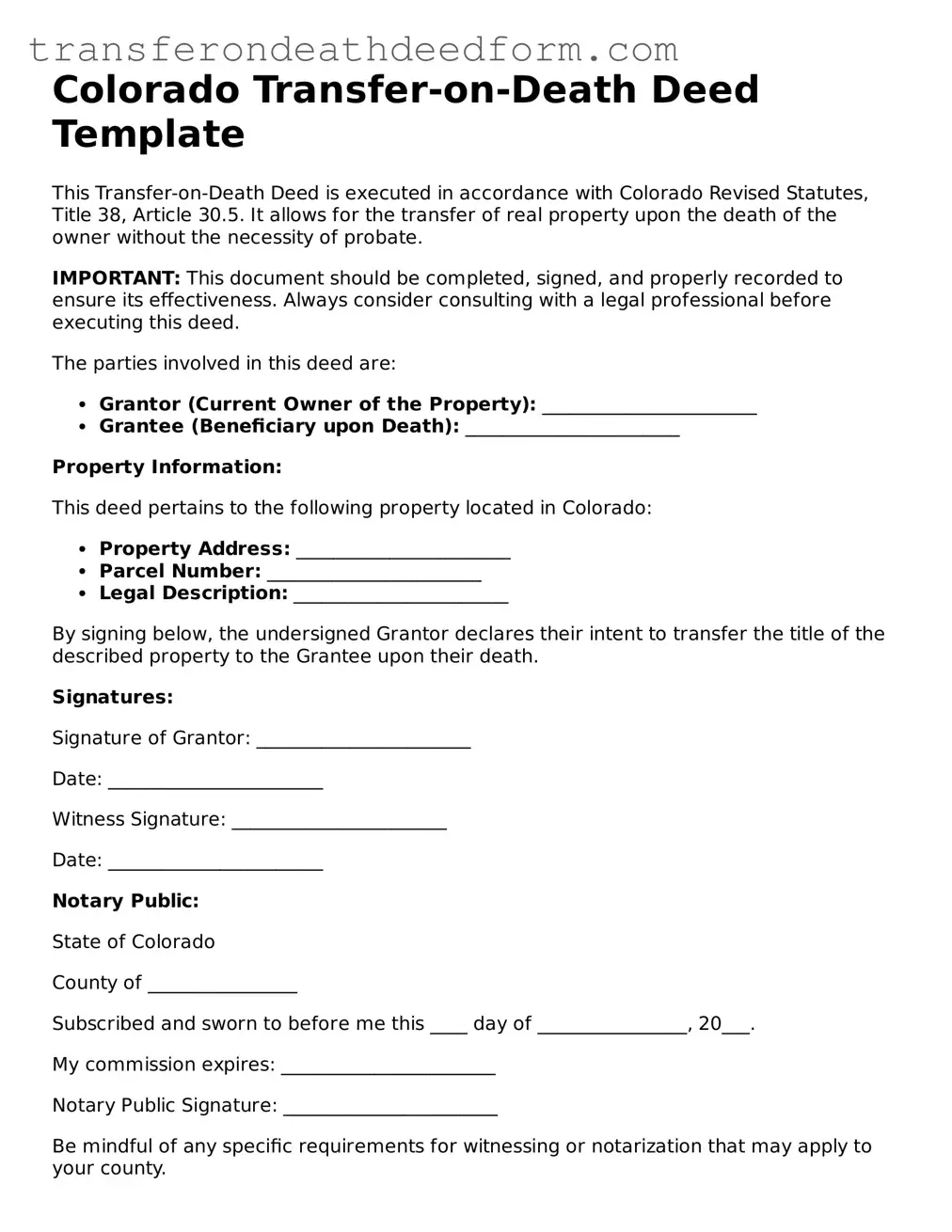Colorado Transfer-on-Death Deed Template
This Transfer-on-Death Deed is executed in accordance with Colorado Revised Statutes, Title 38, Article 30.5. It allows for the transfer of real property upon the death of the owner without the necessity of probate.
IMPORTANT: This document should be completed, signed, and properly recorded to ensure its effectiveness. Always consider consulting with a legal professional before executing this deed.
The parties involved in this deed are:
- Grantor (Current Owner of the Property): _______________________
- Grantee (Beneficiary upon Death): _______________________
Property Information:
This deed pertains to the following property located in Colorado:
- Property Address: _______________________
- Parcel Number: _______________________
- Legal Description: _______________________
By signing below, the undersigned Grantor declares their intent to transfer the title of the described property to the Grantee upon their death.
Signatures:
Signature of Grantor: _______________________
Date: _______________________
Witness Signature: _______________________
Date: _______________________
Notary Public:
State of Colorado
County of ________________
Subscribed and sworn to before me this ____ day of ________________, 20___.
My commission expires: _______________________
Notary Public Signature: _______________________
Be mindful of any specific requirements for witnessing or notarization that may apply to your county.
